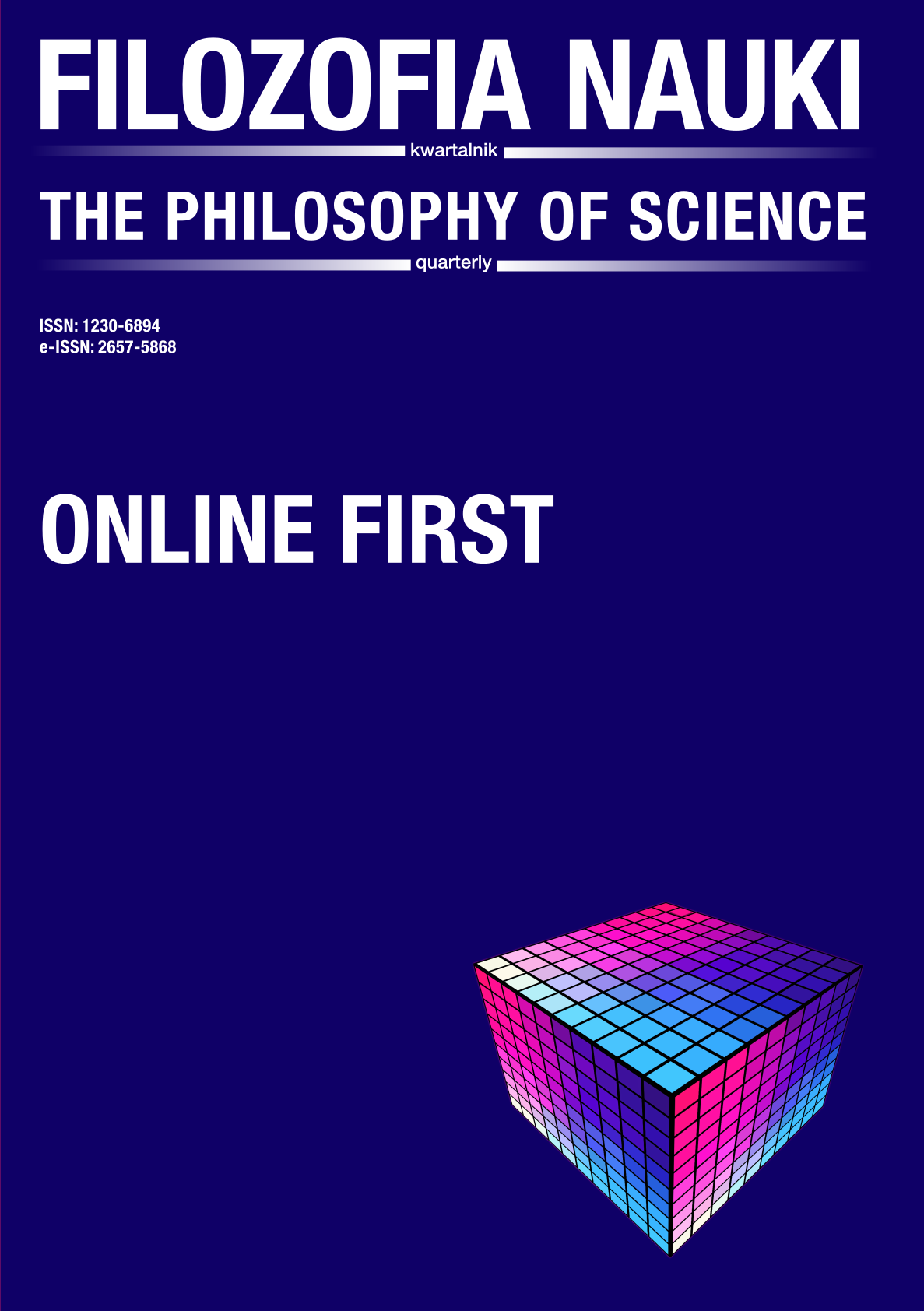Conceptual Engineering and Sex
DOI:
https://doi.org/10.14394/filnau.2023.0016Słowa kluczowe:
sex, binary, conceptual engineering, pluralism, dilemmaAbstrakt
Current debates on the nature of human biological sex often revolve around the question “Is sex binary?” In this paper, I argue that framing the debate in these terms is problematic as it already constitutes a significant theoretical commitment which results in oversimplistic characterizations of human sex. I argue, thus, that neither the positive nor the negative answer to the question “Is sex binary?” is satisfactory and that a more nuanced approach is required. More positively, I suggest that conceptual engineering provides promising tools to engage in this debate more fruitfully and transparently. Finally, I defend conceptual pluralism about human biological sex, the view according to which the term ‘sex’ may be legitimately paired with more than one concept of sex.
Bibliografia
Ainsworth C. (2015), “Sex Redefined,” Nature 518, 288–291. https://doi.org/10.1038/518288a
Anspach R. R. (1979), “From Stigma to Identity Politics: Political Activism Among the Physically Disabled and Former Mental Patients,” Social Science & Medicine 13A, 756–773. https://doi.org/10.1016/0271-7123(79)90123-8
Ásta (2018), Categories We Live By: The Construction of Sex, Gender, Race, and Other Social Categories, Oxford: Oxford University Press. https://doi.org/10.1093/oso/9780190256791.001.0001
Becker G. (1981), “Coping with Stigma: Lifelong Adaptation of Deaf People,” Social Science & Medicine 15B, 21–24. https://doi.org/10.1016/0160-7987(81)90005-3
Byrne A. (2018), “Is Sex Binary?” Arc Digital, 2 November 2018, https://arcdigital.media/issex-binary-16bec97d161e.
Cass V. C. (1979), “Homosexual Identity Formation: A Theoretical Model,” Journal of Homosexuality 4, 91–104. https://doi.org/10.1300/j082v04n03_01
Chalmers D. (2011), “Verbal Disputes,” Philosophical Review 120(4), 515–566. https://doi.org/10.1215/00318108-1334478
Chase C. (1999), Surgical Progress is Not the Answer to Intersexuality, [in:] Intersex in the Age of Ethics, A. D. Dreger (ed.), Hagerstown, MD: University Publishing Group.
Dupré J. (1993), The Disorder of Things: Metaphysical Foundations of the Disunity of Science, Cambridge, MA: Harvard University Press.
Ereshefsky M. (1998), “Species Pluralism and Anti-Realism,” Philosophy of Science 65, 103–120. https://doi.org/10.1086/392628
Ereshefsky M. (2001), The Poverty of the Linnaean Hierarchy, Cambridge: Cambridge University Press.
Fausto-Sterling A. (1993), “The Five Sexes: Why Male and Female Are Not Enough,” Science 33, 20–24. https://doi.org/10.7551/mitpress/7458.003.0023
Fausto-Sterling A. (2000), “The Five Sexes, Revisited,” The Sciences 40(4), 19–23. https://doi.org/10.1002/j.2326-1951.2000.tb03504.x
Fausto-Sterling A. (2016), “On the Critiques of the Concept of Sex: An Interview with Anne Fausto-Sterling,” Journal of Feminist Cultural Studies 27(1), 189–205. https://doi.org/10.1215/10407391-3522805
Fausto-Sterling A. (2018), “Why Sex Is Not Binary,” The New York Times, October, 25, 2018, https://www.nytimes.com/2018/10/25/opinion/sex-biology-binary.html.
Fausto-Sterling A. (2020), Sexing the Body: Gender Politics and the Construction of Sexuality, Updated ed., New York: Basic Books.
Fricker M. (2007), Epistemic Injustice: Power and the Ethics of Knowing, Oxford: Oxford University Press. https://doi.org/10.1093/acprof:oso/9780198237907.001.0001
Griffiths P. (2020), “Sex Is Real,” Aeon, https://aeon.co/essays/the-existence-of-biological-sexis-no-constraint-on-human-diversity.
Kitcher P. (1984), “Species,” Philosophy of Science 51, 308–333. https://doi.org/10.1086/289182
Kitcher P. (1987), “Ghostly Whispers: Mayr, Ghiselin, and the ‘Philosophers’ on the Ontological Status of Species,” Biology and Philosophy 2, 184–192.
Lebacqz K. (1997), “Difference or Defect? Intersexuality and the Politics of Difference,” Annual of the Society of Christian Ethics 7, 213–229. https://doi.org/10.5840/asce19971714
Mayr E. and Ashlock P. D. (1991), Principles of Systematic Zoology, 2nd ed., Columbus: McGraw-Hill.
Preeves S. E. (1999), For the Sake of the Children: Destigmatizing Intersexuality, [in:] Intersex in the Age of Ethics, A. D. Dreger (ed.), Hagerstown, MD: University Publishing Group.
Roughgarden J. (2013), Evolution’s Rainbow: Diversity, Gender, and Sexuality in Nature, Berkeley: University of California Press.
Sax L. (2002), “How Common Is Intersex? A Response to Anne Fausto-Sterling,” Journal of Sex Research 39(3), 174–178. https://doi.org/10.1080/00224490209552139
Stock K. (2021), Material Girls: Why Reality Matters for Feminism, London: Fleet.
Sun S. (2019), “Stop Using Phony Science to Justify Transphobia,” Scientific American, June 13, 2019, accessed September 15, 2021, https://blogs.scientificamerican.com/voices/stopusing-phony-science-to-justify-transphobia/.
Ziemińska R. (2018), “Beyond Dimorphism: Intersex Persons and the Continuum of Sex Characteristics,” International Journal of Gender and Women’s Studies 6(1), 176–184. https://doi.org/10.15640/ijgws.v6n1a16
Ziemińska R. (2020), “The Epistemic Injustice Expressed in Normalizing Surgery on Children with Intersex Traits,” Diametros 17(66), 52–65. https://doi.org/10.33392/diam.1478
Ziemińska R. (2022), “Toward a Nonbinary Model of Gender/Sex Traits,” Hypatia 37(2), 402–421. https://doi.org/10.1017/hyp.2022.10
Pobrania
Opublikowane
Jak cytować
Numer
Dział
Licencja
Prawa autorskie (c) 2023 Iñigo Valero

Utwór dostępny jest na licencji Creative Commons Uznanie autorstwa – Użycie niekomercyjne – Bez utworów zależnych 4.0 Międzynarodowe.



















 Filozofia Nauki | ISSN 1230-6894 | e-ISSN 2657-5868
Filozofia Nauki | ISSN 1230-6894 | e-ISSN 2657-5868